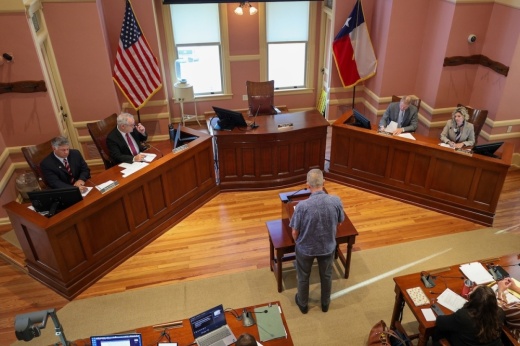County Judge Sherman Krause was not present and Precinct 2 Commissioner Scott Haag dissented. Haag said Comal County residents could potentially see increased taxes, which would go toward paying back the loan from the revolving fund.
“We’re going to have to pay [the loan] back, and that’s going to have to come from the property taxes,” Haag said.
The fund is authorized through the Clean Water Act passed by Congress in 1972, providing low-cost financial assistance for cities, counties and other authorities in the acquisition, design and construction of water infrastructure across the state.
The details
If approved by TWDB, the funds would come in the form of a loan to launch the Comal County Water Quality Protection Lands Program for state fiscal year 2026-27, according to commissioners.
The program seeks to acquire land in the recharge zones of the Trinity and Edwards aquifers in Comal County in hopes of protecting ground and surface water availability, according to Comal County.
The land acquired by the county would be designated as a Priority Groundwater Management Area, or PGMA, by the state. PGMA’s are defined as land that is currently, or is expected to in the next 50 years, experience shortages or contamination of groundwater, according to the Texas Commission on Environmental Quality.
In that timeline, Comal County's population is expected to boom to over 950,000 by 2080, according to TWDB—marking a major increase in need for water resources.
The demand would balloon from approximately 58,372 acre-feet, or about 19 billion gallons a year, to over 193,961 acre-feet, or 63 billion gallons, according to TWDB data.
Applying to the TWDB Clean Water State Revolving Fund would unlock key planning and financial support for the county in this endeavor, according to Moriarty and Associates, the law firm that put together the application and Project Information Form.
Approximately $4.5 million of the loan could be forgiven, with the remaining $25.5 million to be repaid over 30 years at an annual interest rate of approximately 2.91%, Precinct 3 Commissioner Kevin Webb said. This equates to just over $1 million a year in loan repayments.
A $45,000 payment to Moriarty and Associates was also approved by the county to pay for the firm’s application submission, acting as liaison between TWDB and Comal County during the process, and supporting the county through receiving the funds, according to the firm.
How we got here
Moriarty and Associates began the application process in 2021 with the initial PIF and resubmitted every subsequent year. This year, Webb, who spearheaded the project, received an invitation to apply Oct. 3.
What they’re saying
Public comment on the item ran for more than an hour, with dozens of speakers standing in support of the application, calling water and green spaces in the county an essential part of the lifestyle and traditions of county residents.
Felicia Owens, a Comal County resident, pressed commissioners to move forward with the item, saying water is the identity of the county.
“What will we be known for when there is no water?” Owens said. “What happens to the businesses that are thriving here, that are based on that water?”
Roxanna Dean, another Comal County resident, spoke about the need for conservation efforts now, saying the cost of land and water protections could double in the next decade.
“[The loan terms] make this a landmark investment in quality of life, environmental resilience and taxpayer value. This is not government overreach, it is responsible stewardship,” Dean said.
What’s next
The vote allows the county to submit an "Intent to Apply" form to TWDB, which must be done by Nov. 3, according to TWDB, followed by a required preapplication meeting with the board to ensure the project meets its standards and requirements.
A completed application must then be submitted to TWDB by Dec. 4, which will review the application and either approve or deny the funds.
If approved, closing documents will be filed and the county would begin providing quarterly outlay reports detailing expenditures and loan repayments, according to TWDB.





